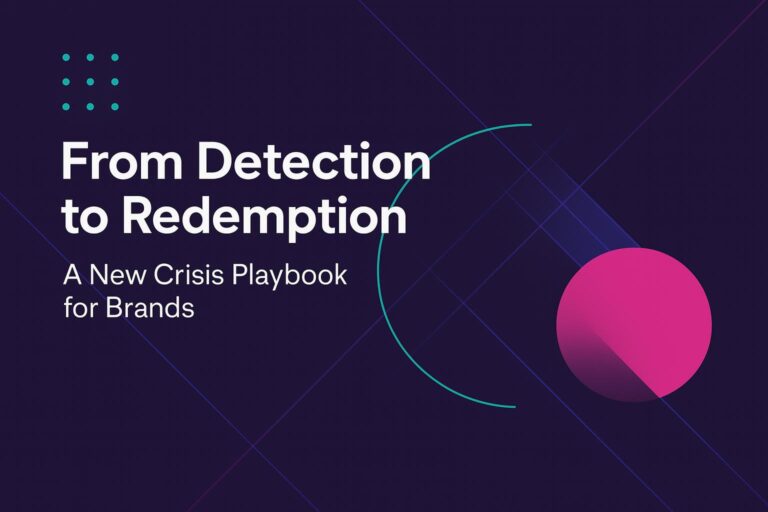By Jessica Grinspoon, Cyabra Team
Why spend time learning about disinformation? As information, facts, rumors, and fears disperse, it becomes difficult to discern what is true from what is not. Knowledge is power and understanding how media manipulation occurs will make you less vulnerable to lies.
The digital age requires a renewed commitment to make sure the information broadcasted for millions of eyes and ears is authentic. That’s where Cyabra comes in. We break down online conversations, detect disinformation, and determine influence and reach for both private and public organizations. Our AI unravels layers of conversations within minutes to capture buzz and extract insights.
Disinformation is not only related to political parties and governments. It’s all around you. As a society, we should care about who is trying to skew our opinions on all issues, not just in politics.
For example, in the recent Johnny Depp versus Amber Heard trial, Cyabra found a clear community of profiles promoting pro-Depp content and pro-Heard content on Twitter.
Whether disinformation masks itself as a viral meme, tweet, video, text message, Facebook post, or in the news, it is designed to create public discourse. This wide variety of disinformation types makes it increasingly difficult to decipher fact versus fiction without using technology.
Counteracting Disinformation
Familiarizing yourself with common media narratives will make you less susceptible to believing false information that emerges during election campaigns. Watch out for premature election results, delegitimization narratives, and political suppression fabrications that discourage specific groups of people from participating in politics.
Media literacy plays a significant role in combating the spread of manipulated information. A media-literate person is able to identify the influence of information and evaluate the meaning behind its message.
Individuals who encounter disinformation may actively spread it further, by sharing and engaging with it on all media platforms. Increasing your own media literacy by following a few simple guidelines will help you navigate news’ articles and recognize the difference between a true story and a fictional narrative.
Review the Author’s Credibility
Check to see if the information you read online can be traced to a contact. Do they have an “About Us” page? If not, its absence is generally intentional. If the page is present, take the time to familiarize yourself with the author’s credentials.
Assess the Transparency of Media Ownership
Keep in mind, specific platforms can be tainted to only offer one side of the story. Ask yourself if the media outlet may have political or personal motivations such as affiliated political parties or sponsorships.
Corroborate Your Information
It’s common for media outlets to intentionally report one side of the story, or generate complete false narratives. if the headline makes you really angry or fearful, it might be just a clickbait, and it’s a good idea to keep reading about the topic before sharing the information. If possible, read multiple sources and cross-check the information you encounter before forming a complete opinion.
Check the Date
Checking the time and date to make sure you’re not receiving or sharing old information is standard practice. But what if it’s a photo that’s been claimed as new, and you suspect it isn’t? Use Google images and fake news debunking sites to make sure the information is recent and accurate. Information changes rapidly, but once it is on the internet, it can be resurfaced and reposted any time. The evolving information distributed regarding the Coronavirus illustrates how a research finding from last month may not hold the same value.
Lastly, abundant information does not boost its credibility! People tend to perceive claims as truer if they have been exposed to them before or shared widely by their inner circle. This is commonly known as the illusory truth effect. The illusory truth effect reinforces why it is essential to incorporate the recommendations mentioned into your daily lives.
It’s time to take control of the narrative and not let the narrative control you.
Key Terms in Disinformation
- Misinformation: False information created and shared, but not with the intention of causing harm
- Disinformation: False information created and shared to deliberately deceive and inflict harm
- Mal-information: Accurate information shared out of context with the intention of causing harm
- Disinformation campaign: A set of actions and false narratives carried out by bad actors with the intention to deceive
- Bad Actors: A person or group of people who knowingly engage in deception campaigns
- Sockpuppet: Fictitious online identity controlled by a human for the purpose of deception
- Bot: Automated online accounts spreading content without human involvement
- Troll: People who use their personal accounts to provoke others online and engage in deception campaigns
- Yellow journalism: American term used for sensationalistic or biased journalism
- Deepfake: Visual and audio content manipulated by machine learning technology
- Shallow fake: Visual content manipulated by editing softwares
- Illusory truth effect: people tend to perceive claims as truer if they have been exposed to them before
Disinformation For Beginners series includes:
- Part 1: Information Types: What is the difference?
- Part 2: Who is Manipulating the Media?
- Part 3: Are You Being Manipulated?
- Part 4: Flattening the Disinformation Curve & Cyabra’s Disinformation Term Log


